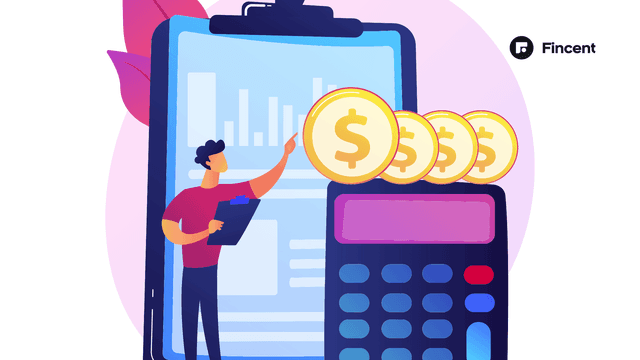- Glossary
- Net Operating Income
Net Operating Income
Real estate assets that generate money are evaluated for profitability using a metric known as net operating income (NOI). NOI is calculated as total property income less all regarded reasonable (link: https://fincent.com/glossary/operating-expense text: operating expenses).
On a property's income and cash flow statement, NOI is a before-tax statistic that does not include loan principal and interest payments, capital expenses, (link: https://fincent.com/blog/what-is-depreciation-types-formula-calculation-methods text: depreciation), or amortization. Earnings before interest and taxes, or "EBIT," is the name given to this measure when it is applied to other industries.
Normalizing Expenses to Calculate NOI
There are four primary categories of expenses that need to be recognised in order to compute a property's NOI. They are:
- Non Controllable Expenses: Property taxes, utilities, insurance, perhaps snow removal, security, or concierge services are some examples (where applicable). They are referred to as "non-controllable" since failure to pay them will probably result in a violation of the lease between the landlord and the renter (s). Non-controllable expenses are paid in cash, and they are never deducted from NIBT for calculating NOI.
- Controllable Expenses: NOI and NIBT are impacted by three important categories of controllable expenses. They consist of interest, overhead expenses, and maintenance & repairs. They are managed in that landlords can carry out bogus repairs or maintenance in order to inflate expenses and pay less tax, as well as "defer" maintenance in order to overestimate NIBT (for instance, if they are seeking to sell the property). Certain controllable expenses are either normalized or added back to NIBT to determine NOI.
- **Non-Cash Expenses: **Depreciation represents the largest expense. Depreciation is a non-cash expense, similar to EBITDA (for corporate finance), hence when calculating NOI, it is removed from NIBT.
- “Hypothetical” Expenses: A "vacancy allowance" is a crucial illustration. Even though many commercial properties might be fully leased at the time of financing or acquisition, the majority of commercial real estate experts and lenders will provide the property a vacancy allowance. They simulate fictitious "downtime" where the property might be empty for a while without any rental income and are expressed as a percentage of rental income.
How to Calculate Net Operating Income (NOI)
Subtract operational costs from a property's revenue to determine net operating income. Rental income, parking fees, service changes, vending machine and laundry machine revenue, among other sources of income, are all included in real estate.
The costs incurred in maintaining the property are referred to as operating expenses. They consist of the cost of property management, as well as upkeep, repairs, and utilities.
NOI Formula = RR - OE
Where:
RR = Real Estate Revenue,
OE = Operating Expenses
Let's use the information below as an example for the profile of a specific condominium complex that a landlord was renting out.
Revenue:
- Rental income: $20,000,
- Parking fees: $5,000,
- Laundry machines: $1,000
- Total Revenues = $26,000
Operating Expenses:
Suppose the condo building's operational expenses are as follows:
- Property management fees: $1,000,
- Property taxes: $5,000,
- Repair and maintenance: $3,000,
- Insurance: $1,000
- Total Operating Expenses = $10,000
- The net operating income (NOI) in this example would be $26,000 - $10,000 = $16,000.
Conclusion
The profitability of a property is commonly assessed using the metric known as net operating income (NOI). The calculation entails subtracting all property-related operating expenses from whatever earnings the asset has generated. The income and expenses of a property increase with its profitability. The owner can then decide if it is worthwhile to spend the money on owning and maintaining the property.


